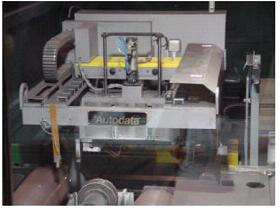Design of fuzzy iterative learning controllers
We propose fuzzy iterative learning controllers (FILCs), which can control fully unknown dynamic plants through iterative learning. Designing learning controllers based on the steepest descent method, one of difficult problems it to identify the change of plant output with respect to the change of control input e/u. To solve this problem, we propose two methods as follows : one is that the sign of e/u is obtained by off-line trials, and the second is on-line method that the value of e/u is calculated using a similarity measure and information in consecutive time steps. Then they adjust the fuzzy logic controller (FLC) using the sign of e/u. As learning process is iterated, the performance of both controllers is improved. Proposed FILCs have the simple architecture compared with previous other controllers. Computer simulations for an inverted pendulum system were conducted to verify the performance of both learning methods.
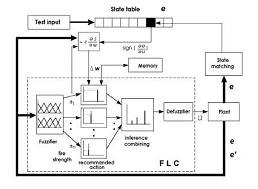
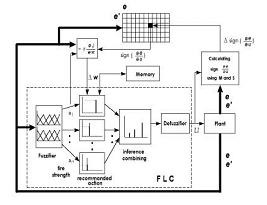
Design of a Fuzzy Sliding Mode Controller with Equivalent Control Input Embedded in Rotated Rule Table
Fuzzy partition of conventional fuzzy sliding mode controllers (FSMCs ) is not enough to describe switching line, and the absence of equivalent control needs large discontinuous input to maintain state vector on switching line. To resolve these problems, we propose a fuzzy sliding mode controller with equivalent control input embedded in rotated rule table. The proposed FSMC has equivalent control input to decrease discontinuous input on the switching line and rotated rule t able to simplify design procedure. The performance of the proposed FSMC is evaluated by computer simulation.

Iterative Learning Control Based on a Fuzzy Model
We propose a new iterative learning control method based on the Takagi-Sugeno (T-S) fuzzy model for nonlinear systems with uncertainty. The nonlinear system is approximated by a T-S fuzzy model and the parameters of linear models in each consequent part of rules are estimated in an iterative way. The inverse of the estimated fuzzy model is used as a learning operator. That is, not only the control input but also the parameters of the T-S fuzzy model are updated in iterative operations. A proposed learning control law based on the inverse model makes it possible that tracking performance is enhanced and a rather specific knowledge of the system is not used in determining a learning operator. A sufficient condition for the convergence of the proposed learning control law is provided. The validity of the proposed learning algorithm is shown by computer simulations.

Fuzzy Q-learning using Weighted Eligibility
Reinforcement learning is a kind of unsupervised learning methods that an agent learns control rules from experiences acquired by interactions of an agent and environment. The eligibility is used to solve the credit-assignment problem which is one of important problems in reinforcement learning. Conventional eligibilities which are accumulating eligibility and replacing eligibility make in effective use of rewards acquired in learning process. Because only an executed action in a visited state is learned by these eligibilities. Thus, we propose a new eligibility, called the weighted eligibility with which not only an executed action but also neighboring actions in a visited state are to be learned. The fuzzy Q-learning algorithm using proposed eligibility is applied to a cart-pole balancing problem, which shows improvement of learning speed.
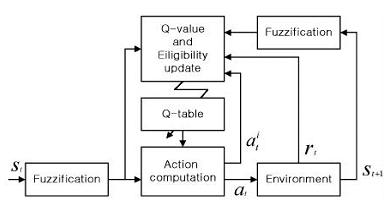
Design of a Fuzzy Controller for the Warp Tension Control in the Weaving Process
In the weaving process, a tension control of the warp yarn is important. The variation of the warp yarn tension cause irregularities of the weft density and low quality of the woven fabrics. Due to fact that warp tension varies in depending on the difference between take-up linear velocity and let-off linear velocity, it is necessary to regulate the linear velocity of let-off in relation to that of take-up operation for keeping warp yarn tension regardless of any disturbances to the system. But, a weaving operation changes the diameter of warp beam. The changing diameter of warp beam cause changing inertia of warp beam and the linear velocity of the let-off. It makes the control of such a system more complex. In this study, we propose a fuzzy controller for the warp tension control system. From the computer simulation, it was observed that a developed fuzzy controller has a better performance, regardless of any disturbances, than that of conventional control low (PID controller).
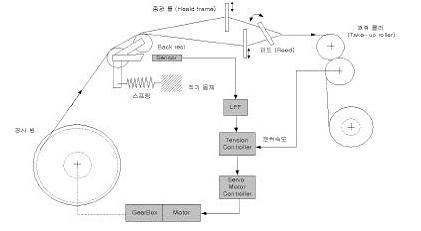
3-dimensional Inverted Pendulum System Using Fuzzy Control
Conventional researches almost have been focused on the one dimensional inverted pendulum. Recently, Sprenger et al have r esearched a two dimensional inverted pendulum. Observing human's action to control an inverted pendulum, one can recognize that human uses a three dimensional motion including the up and down motion. In this study, we propose a fuzzy logic controller (FLC) of a new three dimensional inverted pendulum system. We derive a dynamic equation of the mechanism including a 3-axis Cartesian robot and a inverted pendulum. We propose a design method of a fuzzy controller of the yaw and pitch angles of a inverted pendulum. In the design, the redundant degree-of-freedom(DOF) of the robot and the constrained workspace are taken into account. The PC-based Multi-Motion Control(MMC) board of a 3-axis cartesian robot have been developed. The MMC board is composed of a 4-Channel A/D converter , a 4-Channel D/A converter, and a sensor interfacing ICs. Experimental results using a PC-based experimental system show the validity of the theoretical development and analysis .
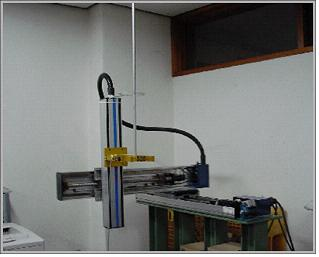
Implementation of fuzzy control algorithm for MFC
The Mass Flow Controller(MFC) has become crucial in semiconductor manufacturing equipments. It is an important element because the quality and the yield of a semiconductor process are decided by the accurate flow control of gas. Therefore, the demand for the high speed and the highly accurate control of MFCs has been requested. It is hard to find an article of the control algorithm applied to MFCs. But, it is known that commercially available MFCs have PID control algorithms. Particularly, when the system detects the flow by way of heat transfer, MFC control problem contains the time delay and the nonlinearity. In this study, MFC control algorithm with the superior performance to the conventional PID algorithm is discussed and the superiority is demonstrated through the experiment. Fuzzy controller was utilized in order to compensate the nonlinearity and the time delay, and the performance is compared with that of a product currently available in the market. The control system, in this presentation, consists of a personal computer, the data acquisition board and the control algorithm carried out by LabWindows/CVI program on the PC. In addition, the method of estimating an actual flow from sensor output containing the time delay and the nonlinearity is presented. In conclusion, according to the result of the experiment, the proposed algorithm shows better accuracy and is faster than the conventional controller.
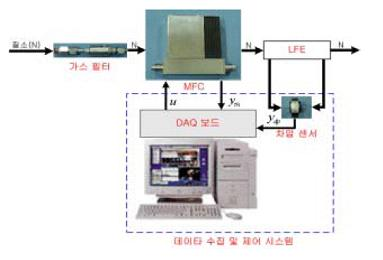
A Development of an Automatic Side-Marking System
This study presents automatic side-marking system that marks a specification of product on the side of a steel plate. In order to automate this process, a host computer transfers marking data to a MMI(Man-Machine Interface) computer and receives the result and system state through data communication. So as to improve stability of system, a PLC(Programmable Logic Controller) achieves the control of the mark-machine and the MMI computer has a role of GUI(Graphic User Interface) between operator and machine. TCP/IP communication protocol is adopted to guarantee the reliability of system. The Mark-machine is composed of a frame, a traverse unit, a marking-head unit and a pump unit. Currently, the automatic side-marking system is working at plate production line in Dongkuk Steel Mill Co.
